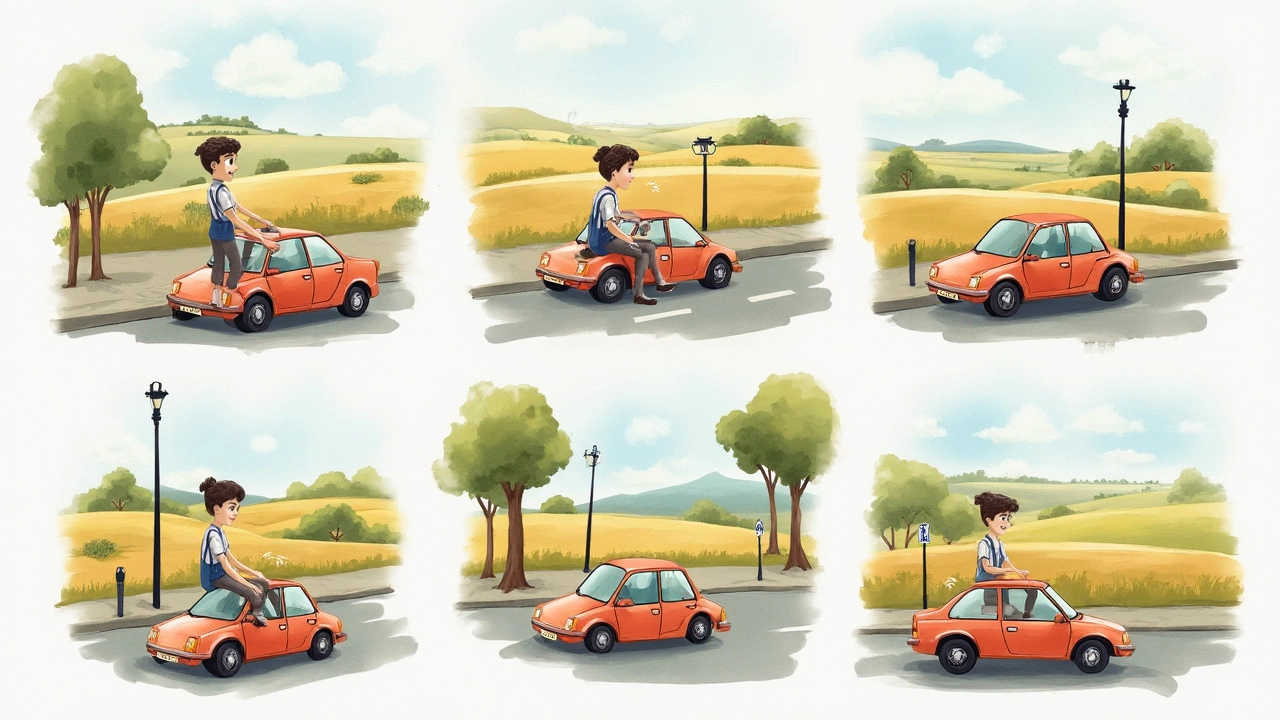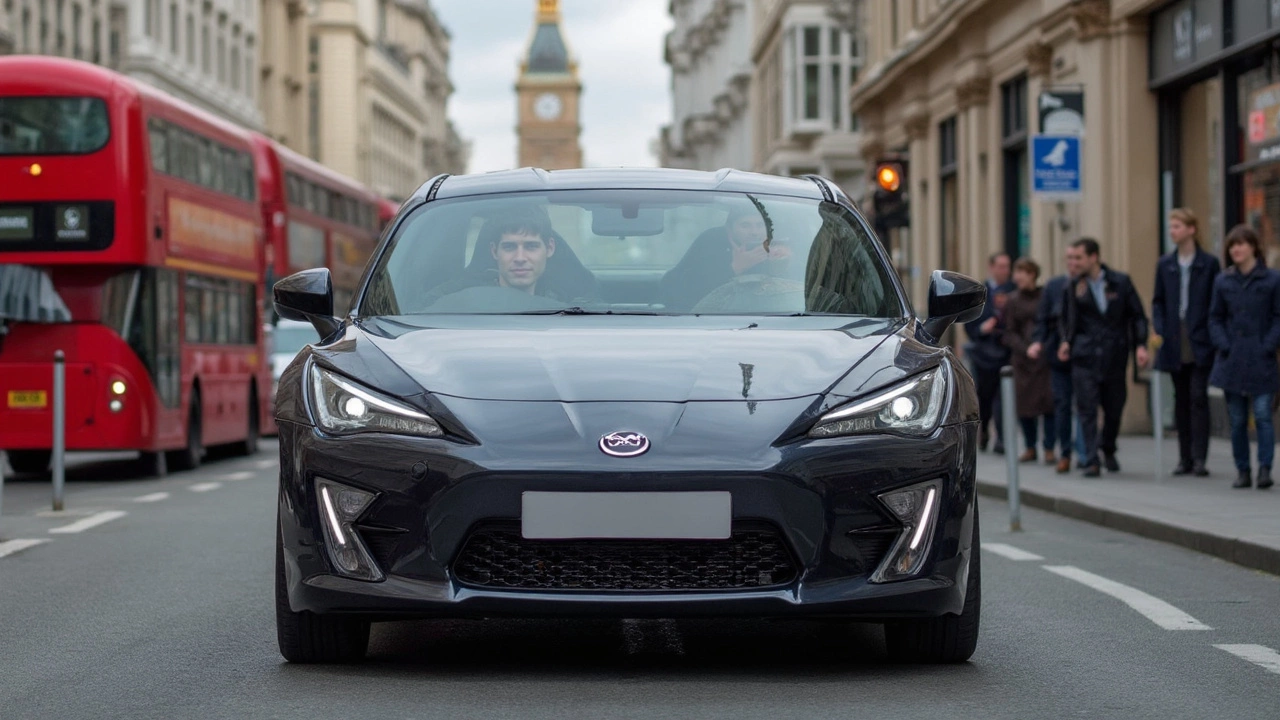If you've ever been behind the wheel during a driving test, you might have found yourself nervously wondering, "Is hitting the curb going to make me fail?" You're not alone; it's a common concern for many newbies in the driving scene. Different regions have different rules. In most areas, hitting the curb might not be an automatic fail but can count as a minor fault, impacting your overall score.
Understanding what counts as a pass or fail in driving tests can sometimes feel like decoding an ancient script. Some driving examiners see it as a slip-up, akin to a 'not-so-great' parallel parking, rather than a major mishap. However, consistently hitting the curb or doing it in a way that endangers pedestrians or other vehicles might be another story altogether.
Want to steer clear of the curb? Practice is key. Spend extra time on turns and parallel parking while leveraging tips from experienced drivers or instructors. Make sure your side mirrors are aligned correctly to provide a proper view of the roadside, especially during maneuvers.
- Understanding Test Failures
- Curb-Hitting Consequences
- Tips to Avoid the Curb
- Real-Life Test Stories
- Practice Makes Perfect
Understanding Test Failures
Passing your driving test doesn't mean being perfect, but understanding what might cause you to fail can ease those nerves. Not every slip-up leads to failure, though.
There are three types of faults examiners look for: minor, serious, and dangerous. Hitting the curb usually falls into the minor category—unless it poses a risk to others, in which case it might escalate.
Minor Faults
Think of minor faults as little oops moments. A few of these, like slightly missing the center of your lane or stopping too far from the curb, won't ruin your test. But racking up too many could show a lack of control over the vehicle, affecting your result.
Serious and Dangerous Faults
Serious faults are the bigger problems. They aren't instantly dangerous but could potentially lead to a dire situation. Dangerous faults do exactly that—put yourself, the examiner, and fellow road users at real risk. Understandably, even one of these can mean a definite failure.
Common Reasons for Failure
Beyond hitting the curb, other common reasons include not checking mirrors, improper lane changes, and failing to respond to road signs. It's not just about knowing how to drive but doing so safely and with awareness of surroundings.
| Type of Fault | Impact |
|---|---|
| Minor | Collect several to impact score |
| Serious | May fail with one fault |
| Dangerous | Definitely fail with one fault |
Being aware and practicing can turn these potential slip-ups into confidence boosts! Next time you practice, focus on these key areas to stay clear of the common pitfalls.
Curb-Hitting Consequences
So, what happens if you end up hitting the curb during your driving test? Let's break it down. Generally speaking, clipping the curb isn't always a reason for automatic failure. But the consequences can depend on how it happens and where you're taking your test.
Minor vs. Major Faults
In many regions, small driving mistakes are marked as minor faults. Every candidate tends to gather a few of these—nerves and all that. But when exactly does it become a major fault? If the act of hitting the curb poses any potential danger, like veering into traffic or endangering pedestrians, it could be considered a major fault. That’s when you might be looking at a fail.
Could It Influence the Score?
Most driving tests are scored based on a combination of minor and major faults. Accumulating too many minor faults throughout your test could add up over time and eventually result in a failure. It’s important to remember that even if hitting the curb once doesn't end your chances, doing it repeatedly or under risky circumstances during the test is another issue.
Common Curbs to Look Out For
- Parallel Parking: This is a classic spot for curb hits, and it can happen if you're too close when lining up.
- Turning Tight Corners: Swing wide enough to make sure you’re not going to graze the curb.
- Narrow Streets: While driving down tight roads, be mindful of getting too cozy with the curb.
It’s useful to consider different test centers and their frequencies in marking the hitting the curb scenario as a major or minor fault. Understanding these nuances can help you prepare better, allowing room for a calmer, more confident test experience. Staying informed keeps you riding steady.

Tips to Avoid the Curb
So you want to keep from kissing the curb on your driving test? No sweat! Here are some practical tips that can help you stay a safe distance away from it.
Practice Makes Perfect
First off, repetition is your friend. Practicing maneuvers like parallel parking and turning frequently can help you build confidence. Head to a quiet neighborhood or parking lot where you can consistently work on your skills without distraction. Try using markers or cones to simulate curbs and get a feel for safe distances.
Adjust Your Mirrors
One hack you might not have thought of: setting up your mirrors right! Properly adjusted side mirrors can help you keep an eye on your distance from the curb. A general tip is to see a sliver of your car in the mirrors, giving you the extra info you need to prevent a mishap.
Focus on Slow and Steady
It's tempting to try and do everything quickly, but controlling your speed can help you make more accurate maneuvers. When you're approaching a curb, reduce your speed. It gives you more time to react and make adjustments, lowering the chances of curbing.
Know Your Vehicle
Get familiar with the size and shape of the car you're using for your test. The more you understand about how much space you have, the better. Take some time to measure or visualize how your car fits within different spaces.
Stay Calm and Collected
Nerves can throw off even the best-prepared drivers. Take a deep breath before you start your test and remind yourself that it's just one moment in the grand scheme of driving. Keeping a cool head can work wonders.
By following these tips, you can reduce the risk of hitting that curb and increase your chances of passing the driving test with flying colors. And remember, nobody's expecting perfection; it's all about improvement and safety first!
Real-Life Test Stories
It's always interesting to hear about how others fared during their driving tests, especially those nail-biting moments when the curb comes into play. These real-life stories not only provide a sense of camaraderie but also highlight what driving test examiners actually focus on.
Handling Minor Mistakes
James, a college student from Tucson, AZ, recalls his driving test as a nerve-wracking experience. 'I lightly brushed the curb while turning left at an intersection,' he said. 'I was sure I'd failed right then, but the examiner just told me to be more cautious. It was only marked as a minor fault.'
James's examiner noted, "It's all about safe driving practices and ensuring the driver's control over the vehicle. A single curb hit, if not habitual, isn't the end of the world."
Making the Most of Second Chances
Not everyone gets it right the first time, and that's perfectly fine. Amanda, a nurse from Portland, OR, shares her second attempt success story. Her first test ended with failure after hitting the curb twice, but she nailed it in the second attempt by taking it slow and steady.
- Practice makes perfect: Amanda spent an extra week practicing her turns and it paid off.
- Don’t rush: She learned to take her time with each maneuver, drastically improving her control.
Stats on Curb-Hitting
In fact, according to a survey by the National Driving Academy, nearly 15% of new drivers admit to hitting the curb during their first driving test. The takeaway? It's more common than you might think, and not necessarily a deal-breaker.
| Incident | Percentage |
|---|---|
| Curb Hits as a Minor Fault | 60% |
| Leading to Immediate Fail | 20% |
| No Impact on Result | 20% |
Each driving test story is unique, and so are the responses of the examiners. What's clear is that having control and maintaining safety are key, more than minor slip-ups like a curb touch.

Practice Makes Perfect
One of the best ways to avoid hitting the curb and ensuring you pass your driving test is through consistent practice. Driving is a skill, and like any skill, the more you practice, the better you get. Whether you're nervous about the test or just want to sharpen your skills, setting aside time for practice can work wonders.
Enroll in Driving Lessons
Enrolling in a good driving school or hiring a qualified instructor can make a big difference. They can show you the ins and outs of handling the car better and avoiding common pitfalls like curb hits. Plus, they often know what examiners look for, which is a major help for test day.
Create a Practice Schedule
Make a practice schedule and stick to it. Regular practice is essential. Aim for at least 2-3 hours a week, focusing on maneuvers that could trip you up, like parallel parking and sharp turns.
Utilize Technology
Today, tech-savvy learners can use driving apps or simulators to get a feel for real-world driving tests. These can simulate scenarios where hitting the curb might occur and offer guidance on how to handle those situations.
- Download driving apps with practice tests.
- Use simulators to practice from the comfort of home.
Gather Feedback
Ask friends or family to ride along and offer constructive feedback. They might notice habits you don't, whether it's taking turns too fast or neglecting mirror checks. Honest feedback can guide your self-improvement.
Here's where a bit of data can motivate you. Studies show that learners who practice regularly are 40% more likely to pass their driving test compared to those who don't. So, grab those keys, hit the road with confidence, and remember: practice really does make perfect!

